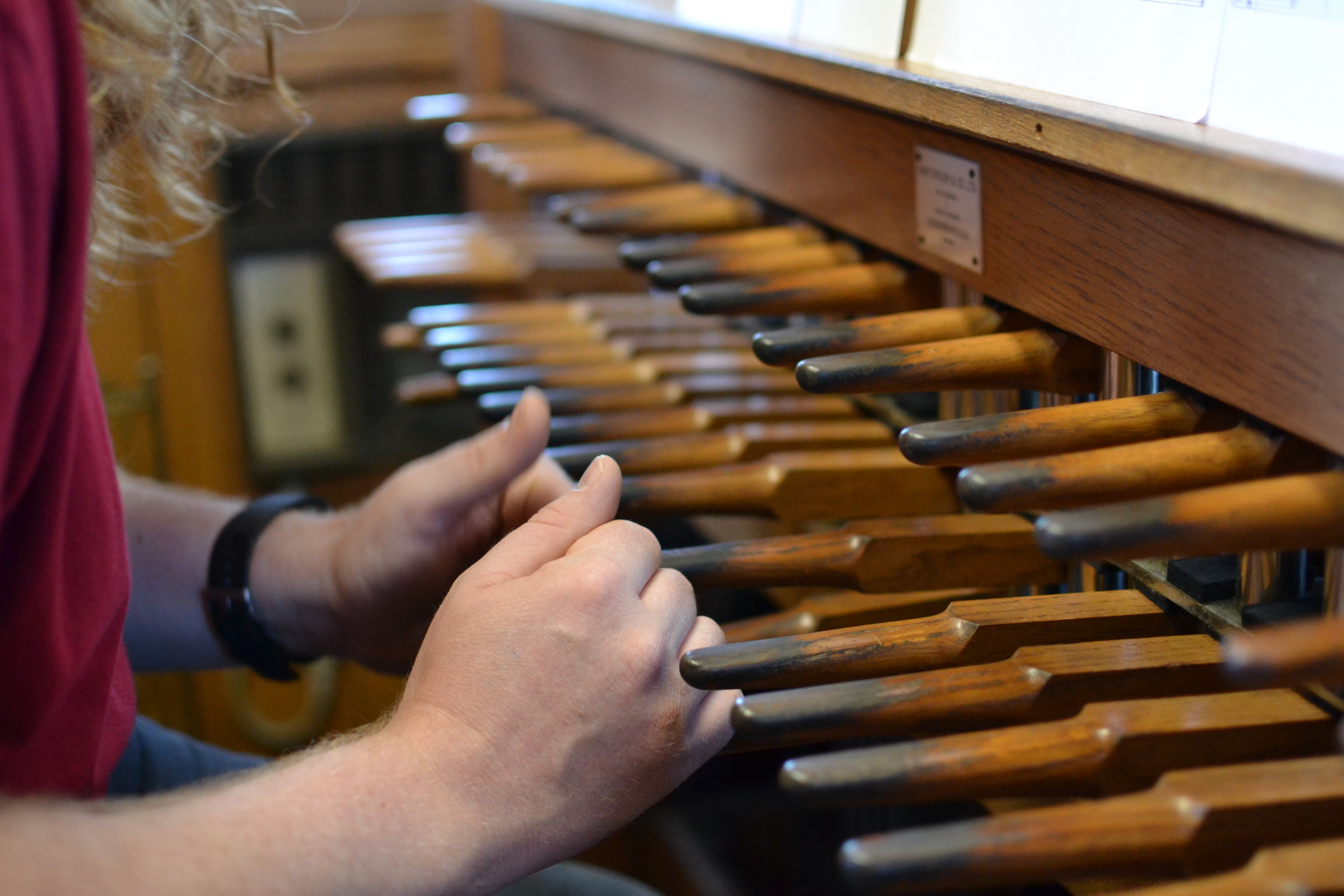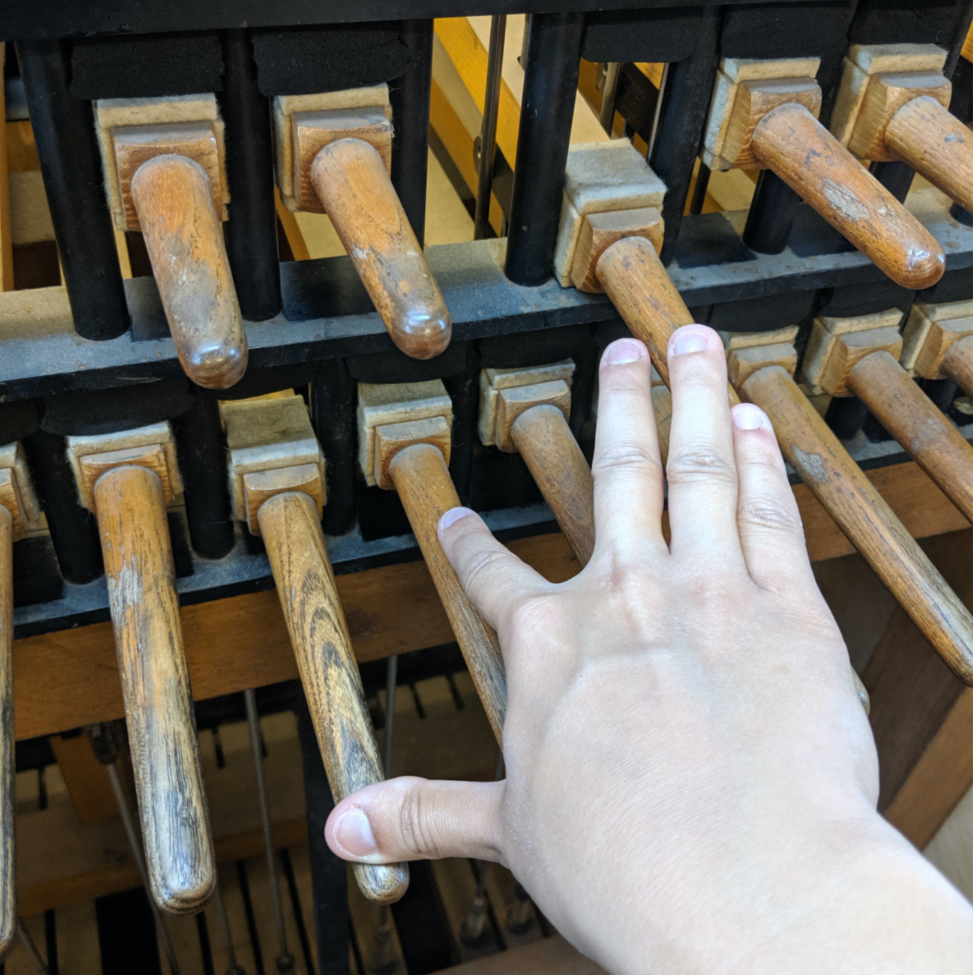The Basics
Playing with two fists
Basic playing technique
Playing with two fists is how most beginner carillonneurs learn to play. This basic technique allows the player good control over the manuals, while also allowing for strong playing, for example in forte passages or on the lower, heavier bells. You can play quickly this way, and also cover a large range in a short period of time.
Open-hand playing
For playing two notes at once in one hand
Using this technique, you can play dyads (two notes at a time) up to a fourth apart with one hand. If the dyad involves a combination of a "white" key and a "black" key, limit the interval to a third (e.g. D and F-sharp), as even this will be a slight stretch for players with smaller hands.
Playing with fingers
For especially light or soft playing
This technique works especially well on lighter carillons or in quiet passages. One can also use it to achieve effects that otherwise would not be possible, e.g. playing a major-third tremolo in the right hand in the trebles, while the left hand plays the melody in the middle register. Such playing is certainly possible on heavier carillons, as long as the open-handed playing is kept in the middle or upper registers.
Pedals
For bass notes, and sometimes assisting with the hands
Each foot can play one note at a time, allowing for two simultaneous notes in the pedals. Quick runs like scales that are longer than just a few notes are impractical in the bass and are better played in the hands. Because the pedals are coupled to the manual, the pedal can also be used to make manual passages in the lower register more playable.
Physical Considerations
It's important to keep in mind that the carillon is a large instrument. The batons are widely spaced, and depending on the transimission mechanism and weight of the bells, it can also be heavy to play, especially in the lower registers. As you write your arrangement, keep the following limitations in mind:
- An interval of more than a tenth in the feet or more than two octaves in the hands may be difficult for one to play due to the spacing of the keys.
- Playing the lowest bass notes in the pedals while simultaneously playing with both hands in the upper register is physically challenging for the carillonneur because it requires the player to stretch diagonally to reach these extremities.
- Rapidly repeated notes in the low register can be difficult or even impossible to play because the batons for lower bells take longer to return after they have been struck due to the heaviness of the clapper.






